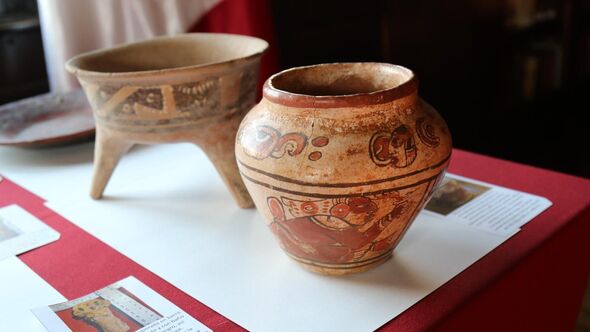A woman who purchased a vase at a charity shop several years ago is now at the forefront of an incredible archaeological breakthrough as the vase has been determined to be between 1,200 and 1,800 years old.
Anne Lee Dozier purchased the ceramic vase at a Maryland thrift shop for less than £3.95 about five years ago, believing it to be a reproduction when she spotted it on clearance, according to a National Public Radio (NPR) report. She believed the vase to be no older than 30 years.
“I could see that it had some kind of link to Mexico, in terms of what it looked like, and since it’s a country that I work on and it’s really important to me, I thought it would be just a nice little thing to take home and put on the shelf to remind me of Mexico,” Dozier said.
A human rights advocate with Christian Solidarity Worldwide, she took an interest because she had worked with Indigenous communities in Mexico.
However, while on a trip to the National Museum of Anthropology in Mexico City earlier this year, she realised that her vase was strikingly similar to the Maya artefacts on display.
She asked a museum official for advice, and was asked to provide photos of the vase and its dimensions to the researchers at Mexico’s National Institute of Anthropology and History.
When she learned that the vase is estimated to have been made between 200 and 800 AD, Dozier was happy to return it.
“I got an email saying, ‘Congratulations – it’s real and we would like it back,’” Dozier said.
“I am thrilled to have played a part in its repatriation story,” she also said in an interview with the local CBS affiliate WUSA. “Giving it back feels so much better than it would if I put it [up for sale online] and I got a bunch of money.”
The vase has now been repatriated to Mexico in a ceremony in Washington D.C.
As NPR noted, the period from 200 to 800 AD was considered to be the height of the Maya civilisation according to historians. The civilisation is believed to have declined after drought, infighting and eventually European conquest, among other factors. It is known for its ancient temples and glyphs (script). It developed in an area that today comprises southeastern Mexico, all of Guatemala and Belize and western portions of Honduras and El Salvador.
“A valuable witness of our Maya history returns home … thanks to the generosity of Anne Lee Dozier,” Esteban Moctezuma Barragán, Mexico’s ambassador to the US, wrote on X, “This historic jewel will be reintegrated within the collection of [Mexico’s National Museum of Anthropology and History] to preserve our rich cultural heritage.
“We will remain firm in our commitment to protect cultural heritage, through international cooperation.”
